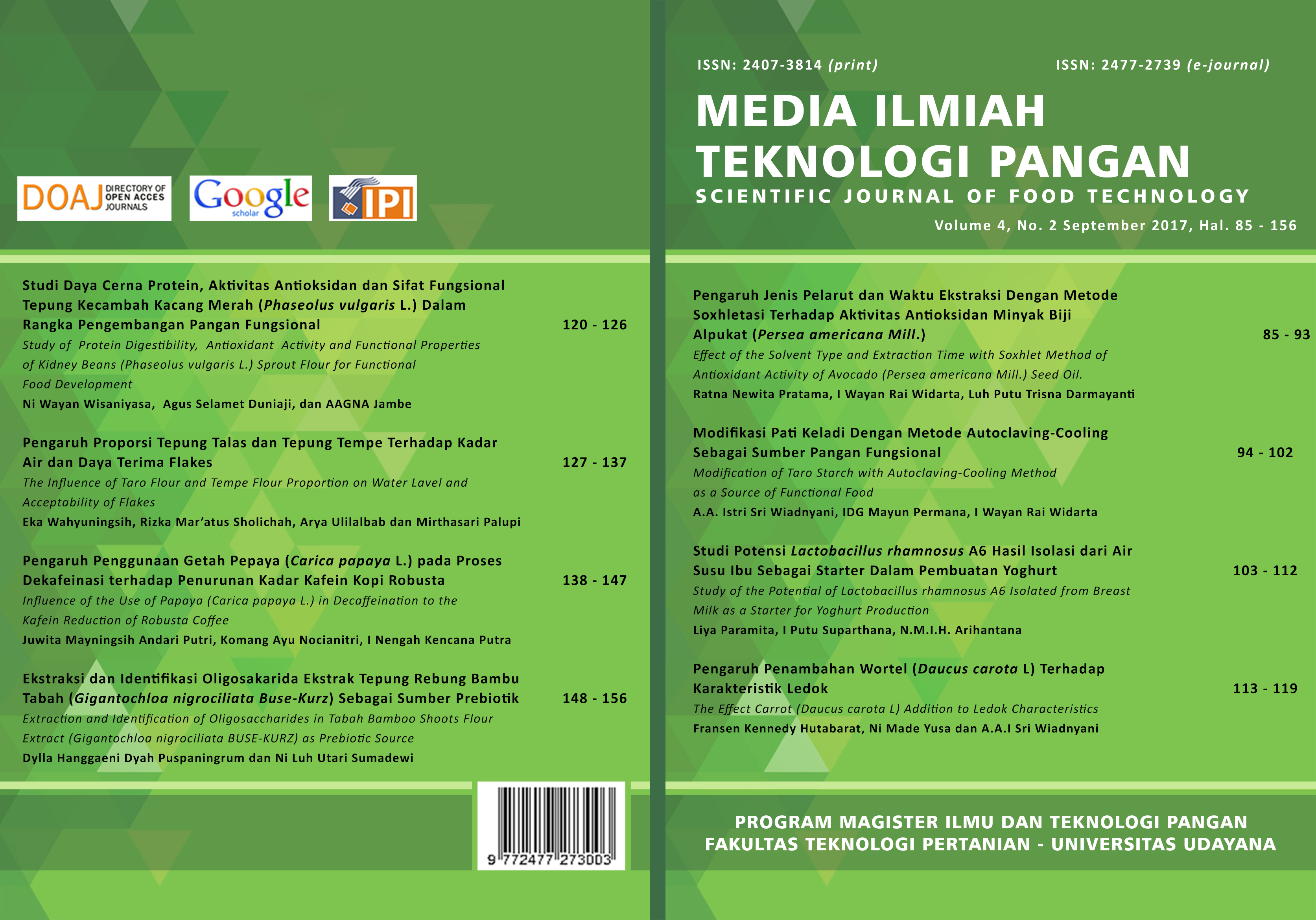The Influence of Taro Flour and Tempe Flour Proportion on Water Lavel and Acceptability of Flakes
Abstract
To reduce dependence on wheat flour were utilizing Indonesia local products. Taro tuber as a potential source of dietary fiber but protein quality is low. An alternative to improve protein quality is by the addition of tempeh flour. Flakes from taro flour and tempeh flour is expected to be an alternative food to ensure adequate intake of dietary fiber and protein. To analyze the effect of taro flour and tempeh flour addition on water content and organoleptic quality of flakes.The study of flakes using Complete Random Design, with two factor and each treatment combination was repeated 3 times. They were wheat flour:taro flour:tempeh flour (20%:65%:15%); (20%:50%:30%) and (20%:35%:45%). Statistical analyzed of water content used Anova One Ways and organoleptic test used Friedman test. Flakes with 20% wheat flour, 65% taro flour, and 15% tempeh flour have a lowest water content 4,2%, but was still bellow standart specified by SNI and had a significant effect (0,00 < ? 0,01) on water content. Taro and tempeh flour on flakes had significant effect on aroma (0,038 < ? 0,05), taste (0,00 < ? 0,05), and, texture (0,00 < ? 0,05) but had no effect on colour (0,07 < ? 0,05). Colour, aroma, taste and texture of flakes the most preferred on 20% wheat flour, 65% taro flour, and 15% tempeh flour. Best proportion of the organoleptic quality that is in the proportion of 20% wheat flour, taro flour 65% and 15% tempeh flour. It is advisable to pay attention to the proportion of the addition of taro flour and soybean flour in order to get the moisture content and good organoleptic quality.








